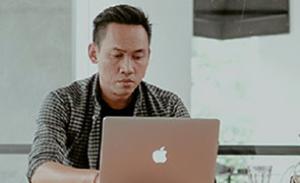What does a UX Designer do?
A UX Designer is responsible for developing the look and feel of a website or application and the user experience. They work with engineers, product managers and stakeholders to create engaging and intuitive interfaces that meet users' needs.
UX Designers typically have a background in graphic design or a related discipline. They must be able to think like both designers and users.
UX Designer job responsibilities include:
- Establishing and defining the overall design strategy for a product or project
- Developing user flows, wireframes and prototypes
- Conducting user research and usability testing
- Defining the aesthetic of a product or interface
- Collaborating with engineers and other stakeholders to ensure that designs are implemented correctly
A user experience designer works in a regular or hybrid workplace when employed full-time or may work from home on a freelance basis. After-hours or weekend work may be required in some situations.
When hiring managers look for UX or UI Designers, they typically want people with bachelor's degrees in graphic design, visual design, computer science or a closely related field such as human-computer interaction or information architecture. Because the needs of UX design vary significantly depending on the products being created for customers, various educational backgrounds provide for distinct design strategies.
Those seeking work as a UX Designer will benefit by having experience with:
- User interface design
- Interaction design
- Web design
- Graphic design
- Computer science
- Human-computer interaction
- Information architecture
- Conducting user research
- Testing user interfaces
- Analysing and resolving usability issues
The ability to communicate and solve problems effectively is also necessary for UX Designers. They must be able to effectively convey their design concepts to others and respond to and act on feedback. They also must detect and resolve difficulties fast since many design modifications might occur throughout the project's lifecycle.
UX designers may collaborate with both internal and external teams to enhance the usability of existing goods and work with other firms that specialise in usability testing and user research.
What technology does a UX Designer use?
UX designers can leverage various other tools to aid their work, including:
- Axure RP, a wireframing and prototyping tool
- UserTesting.com, a user research platform
- CrazyEgg, a user interaction measurement tool
- Adobe After Effects, an animation and motion graphics software
- jQuery, a JavaScript library for adding interactivity to web pages
The software package a UX designer is expected to use will vary depending on the job specifics. Some tools may be used based solely on personal preference. Still, a capable UX designer can effectively use any tools provided to them.
Latest jobs
|
Automation Test Engineer
Wellington Market Rate |
|
|
Senior Cyber Security Consultant
Wellington |
|
|
GIS Tech Lead
Auckland CBD 150000 |
|
|
Information Security Consultant
Auckland CBD |
What's in a UX Designer's job description?
As a UX design professional, you will likely be responsible for user research and analysis, finding and resolving usability concerns, reporting on your design activities and giving advice and feedback to other team members.
The skills that a UX Designer needs vary depending on the firm they are working for, but some of the most ubiquitous UX design skills include:
- Strong communication, problem-solving and analytical skills
- Proficiency in design software such as Adobe Photoshop, Illustrator, InDesign and After Effects
- Knowledge of HTML, CSS and JavaScript
- Experience in user interface and interaction design
- Experience conducting user research and usability testing
- The ability to create prototypes using various software tools
- The duties a UX Designer is required to perform will vary depending on the firm, the tools it employs and how far along a project is in its development. You might be hired from beginning to end or engaged halfway through and required to catch up with current project demands.
Hard and soft skills required by UX Designers include:
- Passion for user interface and user experience design
- Attention to detail
- Excellent communication skills
- Solid understanding of interaction design fundamentals and processes
- Ability to collaborate with other professionals like graphic designers, interaction designers, UX engineers, marketers and more
- Ability to understand and action user feedback
- Problem-solving skills









